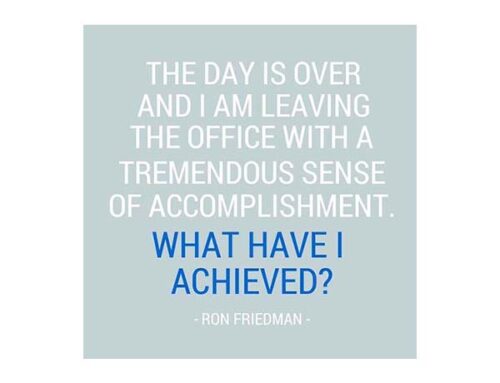Yes, we still have LOTS to learn from Steve Jobs!
 Five days before the release of the first iPad, James Murdoch, a high-ranking executive at News Corp., exchanged a flurry of emails with Steve Jobs. Murdoch and Jobs couldn’t reach an agreement that would allow HarperCollins, a publisher owned by NewsCorp, to add its books to the Apple store before the launch.
Five days before the release of the first iPad, James Murdoch, a high-ranking executive at News Corp., exchanged a flurry of emails with Steve Jobs. Murdoch and Jobs couldn’t reach an agreement that would allow HarperCollins, a publisher owned by NewsCorp, to add its books to the Apple store before the launch.
Their email exchange offers insight into what to do — and what not to do — when writing business emails. Murdoch’s notes are a classic example of how most of us tend to write: long, with multiple ideas and no clear message. Jobs used simple tactics to dominate the correspondence.
Here are five things we can learn from Jobs about how to write effective emails.
1. Have One Purpose
The most efficient emails include just one goal or question.
For example, consider these lines from a long email from Murdoch:
If we could offer to you that a certain percentage of releases (>50%) would be available within your pricing structure (< or = 14.99), does that give you enough comfort? . . .
But if you were willing to accept that a supplier can exploit other avenues (at prices not disadvantageous to you), with a guarantee of substantial volume through Apple—maybe I could work with HC to get to some common ground. Please let me know. . .
But are you willing to accept that a supplier can exploit other avenues…. Please let me know.
What was he asking?
There are so many questions that Jobs answered exactly none of them. Jobs’ response was to-the-point, and he asked just one simple, rhetorical question:
Maybe I’m missing something, but I don’t see any other alternatives. Do you?
It’s easy to imagine he was getting sick of the meandering correspondence.
When you ask more than one question in an email, you run the risk of not getting an answer. A more effective strategy is to make one request per email. If you need to ask another question, wait to get the first response.
2. Keep the Design Simple
A key to Apple’s success is its relentless commitment to simplicity. This is evident in the smallest design decisions on products, and it’s clear in Jobs’ emails. In Jobs’ emails, there is one common design element that enables the reader to quickly skim the email and understand its main points.
Unlike Murdoch’s emails with their unwieldy paragraphs, Jobs’ emails included lists. He separated his messages into easily digestible points that contribute to the same argument.
Consider using lists or adding space and emphasis in your own emails to drive home your point.
3. Remove Filler Words
Jobs didn’t use adjectives, adverbs, or other filler words. His sentences were straightforward and concise.
Murdoch’s sentences, on the other hand, were long and clunky. For example:
It seems though that we in each one we largely encounter a “take it or leave it” set of terms . . .
Typo aside, here’s what the sentence would be without fillers:
Each discussion gives us a “take it or leave it” set of terms . . .
If you tend to use a lot of adverbs and adjectives — words like “though,” “largely,” “seems,” “that,” and “really” — make it a habit to remove them before you send an email. Reread the edited draft. If an adjective or adverb was necessary, it’ll be obvious, and you can add those back in. This will make your emails clearer and crisper.
4. Use the Active Voice
Most rules have exceptions. This one does not. Stephen King has a strong opinion on the topic:
Two pages of the passive voice—just about any business document ever written, in other words, not to mention reams of bad fiction—make me want to scream. It’s weak, its circuitous, and it’s frequently tortuous, as well. How about this: My first kiss will always be recalled by me as how my romance with Shayna was begun. . . . A simpler way to express this idea—sweeter and more forceful as well—might be this: My romance with Shayna began with our first kiss. I’ll never forget it.
The passive voice often sounds timid and lacks clarity. For example, consider this line from Murdoch:
In short—we would like to be able to get something done with Apple—but there are legitimate concerns.
Using the active voice would make it a bit clearer:
We want to work with Apple—but there are legitimate concerns.
If you read the sentences side by side, you can see what King means when he calls the passive “weak.” Focus on using the active voice and strong verbs to strengthen your message.
5. Close with Your Request
In marketing campaigns, copywriters always put the call to action at the very end. The same should be true of emails. Why?
If the request is embedded in the middle of the email, it’s likely to be forgotten. At the end, the recipient has just finished reading and is focused on the next step.
In the emails between Jobs and Murdoch, Jobs’s agenda, or “ask,” was straightforward. He wanted Murdoch’s company on board for the iPad launch. But even though the point was abundantly clear, Jobs still ended on it:
We’d love to have HC among [the other publishers].
The purpose of most emails isn’t this complex. We often use emails to request a meeting, get permission for a change, obtain information, or do other daily tasks. But with a simple ask, ending with your request is even more important. When the recipient dashes off their reply, they’re more likely to respond to the last thing that was mentioned.
It can often feel as if email takes up a lot of our workday. With these simple tips, not only will you simplify your email routine, but you’ll also find you’ll get better results.
Thanks for your Wisdom Natasa Lekic




